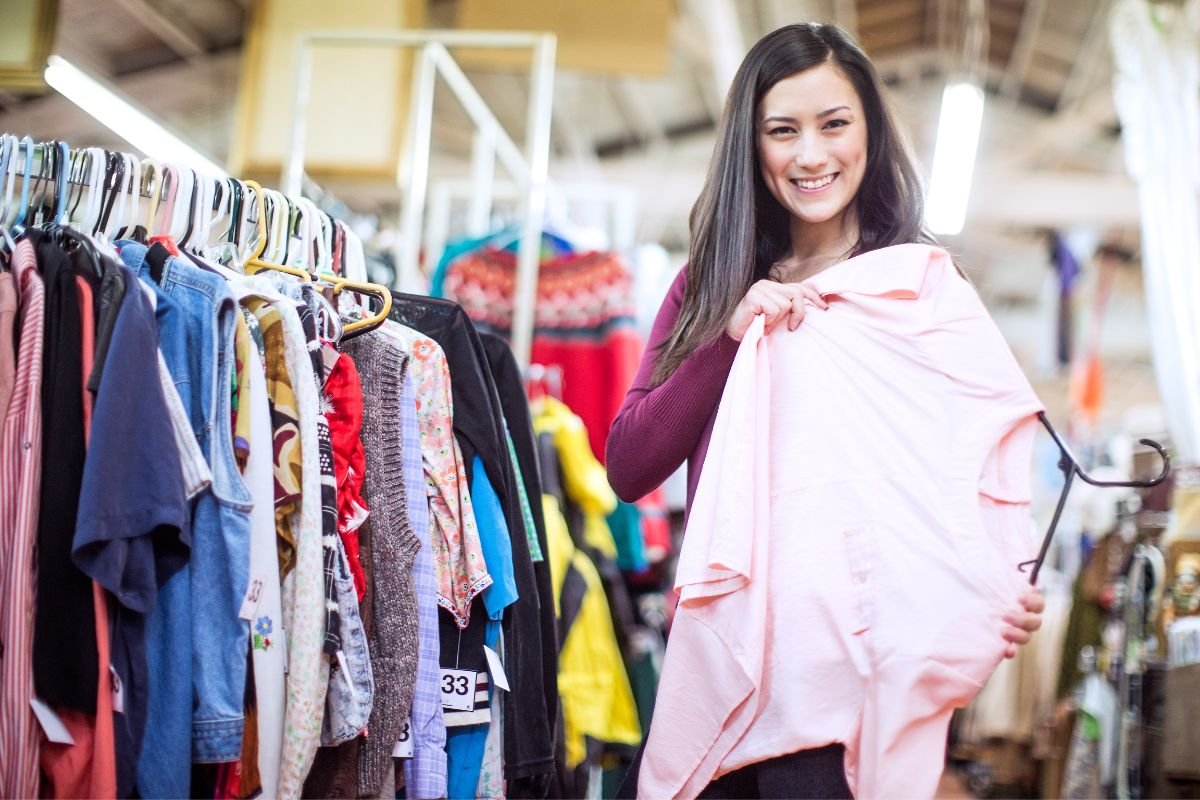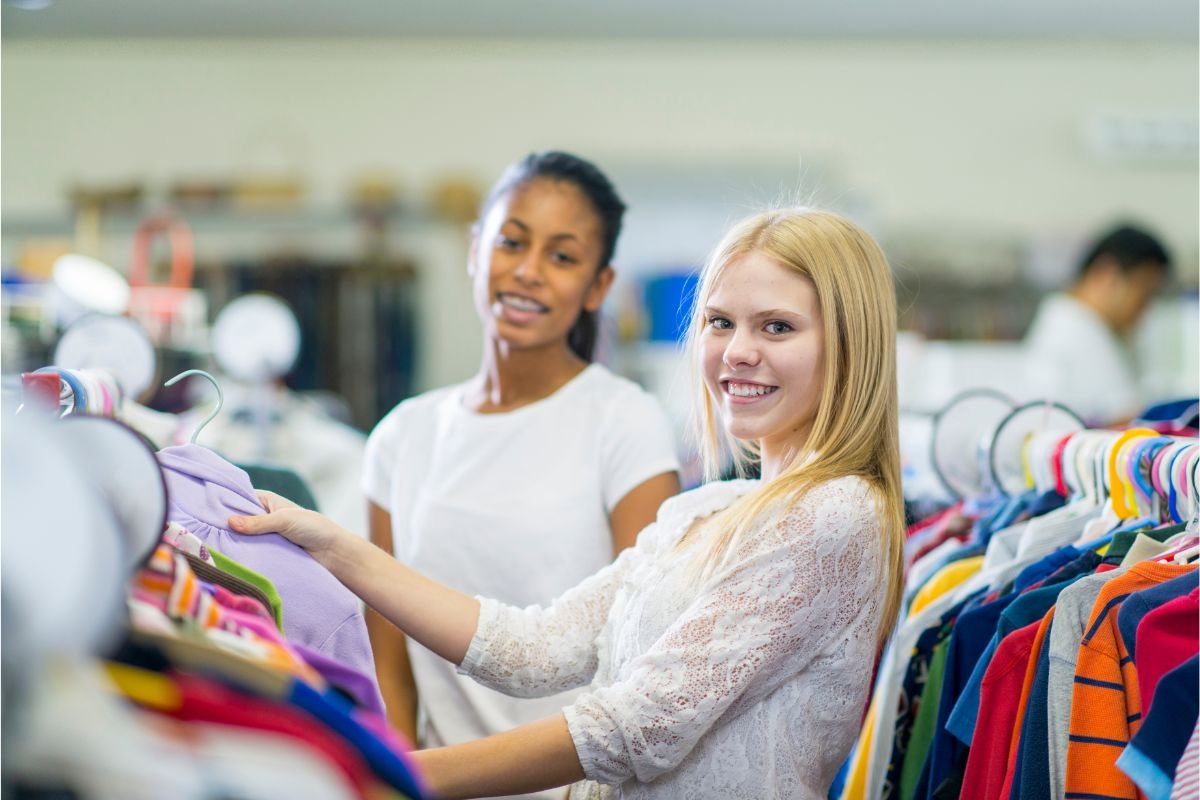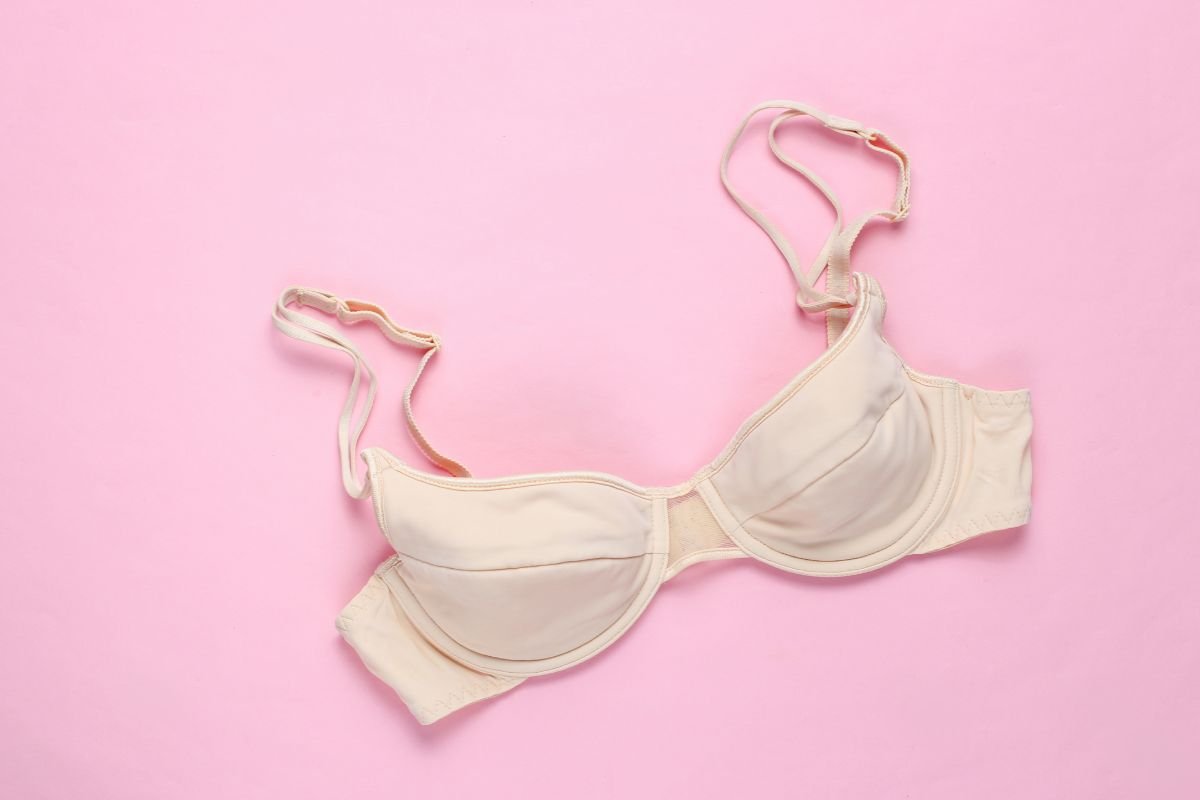Thrifting clothes can help you get rid of your unwanted clothes while preventing them from ending up in landfills.
You may find some amazing finds in thrift stores, but a common question is whether thrift stores wash clothes before they sell them.

The short answer is no, the majority of thrift stores don’t wash their items before they are sold. The person donating the clothes is responsible for cleaning the items before they donate them.
Thrift store workers will look through the products before they go on sale, disposing of any items with stains, bad smells, or damage.
However, while these clothes might look clean at first glance, they may have been in contact with unsanitary items or conditions.
You’ll learn more about why thrift stores don’t wash their clothes in this post, including whether thrifting is safe and how you can wash your clothes to get rid of any lingering bacteria.
Why Don’t Thrift Stores Clean Their Clothes?
Donation charity stores like the Salvation Army or Goodwill don’t have the funds to clean their products.
These stores run on very tight budgets, so they won’t be able to run laundering machines throughout the day.
Charity stores do request that donors clean the items that they donate, but you cannot know for certain if the donations were cleaned or not.
If you are donating clothes, do remember to clean them beforehand and ensure that they are in good condition. This makes them more likely to be bought instead of thrown in the trash.
Thrift store workers will look through the merchandise before they go on sale, removing anything with damage, stains, or smells that can’t be sold. Some stores will send the clothes to textile recycling companies, but a lot of them simply toss the items away.
Other stores use fabric sprays on their merchandise to cover the smell of second-hand items, like body odor. You may think you are purchasing a clean item, but it can be full of sweat and smells.
You may find some thrift shops that clean their clothes, though these are likely to be the higher-end, expensive stores. You can call them up and ask them to be sure.
Nevertheless, always wash secondhand clothing before you wear them. You can never be sure how many people have touched the clothes in the store, tried them on, or if they were cleaned before donation.
How Dirty Is Second Hand Clothing?
As mentioned before, you cannot guarantee that clothes are washed before they are donated. You may not want to think about it, but sweat, food, and other body fluids can affect the items.
If this wasn’t enough, donated items are only kept in thrift stores for a month. If they haven’t been sold during this time, they are sent to a distribution location in which they are resent to a different country or charity store.
These clothes can sit in the containers for a long time, even years in some cases. Fungus and mold can start accumulating on the fabrics.
This can lead to smaller mammals and insects drawn to the clothes, like rats and spiders. These animals can then begin defecating and birthing other mammals in the clothes.
This is a common sight in large textile collecting containers and bins around cities. For this reason, it’s best to take your donations straight to a store.
If this isn’t possible and you have to use the donation bins, place your clothes in a bag and close it as tight as you can.
Is It Safe To Thrift?

The scenarios above are uncomfortable to think about, but as there is no data on donation bins or distribution center conditions, we cannot know for sure if thrifting is safe or not.
However, as thrifting can help prevent piles of clothes from ending up in landfills, here are some things that can protect your skin while you go thrift shopping.
- Purchase a small UV blacklight torch that can detect stains, body fluids, and dirt. Use it to examine any clothes that you like before you buy them. Avoid touching any items that have large stains.
- If you want to try any clothes on, wear something underneath to prevent the fabric from touching your skin. A long sleeve t-shirt works well under tops, while tights are great to wear underneath bottoms.
- Don’t purchase second-hand footwear as various diseases and fungi can lie within the soles.
- By the same token, don’t purchase swimwear, bedding, or underwear from thrift stores. It’s also smart to avoid leggings, athletic wear, and yoga pants, as many people wear these without wearing underwear.
- Always shower after you finish your thrifting session and place anything you were wearing in the wash.
How To Wash Thrift Clothes
You should always wash your second-hand clothes before you wear them, but keep in mind that washing clothes to eliminate bacteria is a difficult process.
You need to wash the items at a high temperature, 60°C, with a quality detergent designed to kill bacteria and germs.
This method, however, isn’t suitable for many garments, as a lot of fabrics can break down at higher temperatures.
You need to choose if you’d like to risk impairing the garment with a hot wash, or whether you clean the item according to the care tag with the risk of leaving germs on the fabric.
It’s best to avoid purchasing hand-wash items as hand washing isn’t strong enough to thoroughly clean your clothes. These garments tend to be too fragile to be machine washed.
Remember to check the garment’s labels before you purchase it. If you won’t be able to clean the garment, don’t purchase it.
The Bottom Line
Thrift stores do not clean their clothes before they are donated, so you cannot be sure if they are free from germs or not.
Clothes in donation bins and distribution stores can also accumulate, giving mammals like rats a good place to hide. This is why it’s so important to wash second-hand clothes before you wear them.
A 60°C wash and a high-quality laundry detergent can remove most germs, but use caution as some items can be too delicate to be laundered this way.
- 15 Amazing Vegan UGG Boots Not To Miss Out On - November 23, 2022
- 15 Vegan Running Shoes To Brighten Up Your Wardrobe - November 23, 2022
- 8 Best VEJA Vegan Sneakers To Buy Today - November 22, 2022










